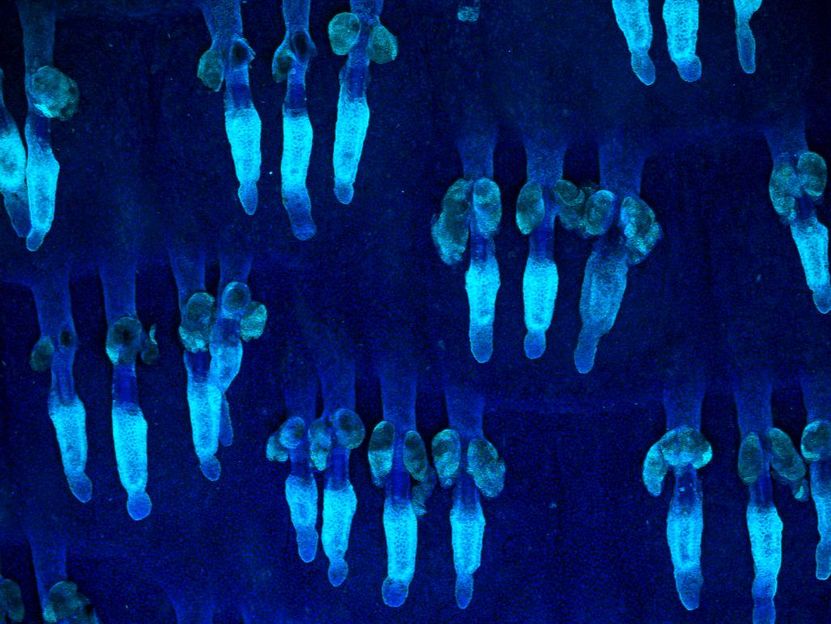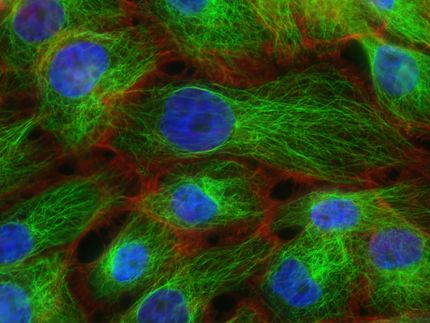Two proteins identified that modulate skin stem cell behavior
The alteration of this function favors the appearance of skin tumors, so this finding may help in the development of antitumor therapies
Advertisement
A study carried out at the cancer Research Center, a joint center of the Spanish National Research Council (CSIC) and the University of Salamanca (USAL), has identified two proteins that modulate the behavior of skin stem cells. The alteration of this function favors the appearance of skin tumors, which is why this finding, published in Oncogene, may help to develop new anti-tumor therapies.

Areas of the skin where stem cells are located.
CIC
The skin represents a physical barrier that protects us from the external environment, in addition to being an organ of great importance for maintaining different physiological parameters such as, for example, body temperature. Due to its continuous exposure to the environment, the skin has to be continuously regenerated to maintain its function. Therefore, each person completely replaces all of his or her skin in a period of less than two weeks. To maintain this process, there are stem cells in the skin that are in charge of producing all the cellular components of our skin such as keratinocytes, sebaceous glands or our hair. Alterations in the function of these stem cells can lead to problems in maintaining the integrity of our skin when they malfunction or to the formation of tumors when they begin to proliferate in an uncontrolled manner. Because of this, precise knowledge of the biological processes that determine the number, maintenance and proper function of skin stem cells is important both from a basic research point of view and for the development of new therapies.
Using genetically modified mice where specific genes could be inactivated or inactivated, a research group led by Xosé Bustelo has discovered that the Vav2 and Vav3 proteins are key to ensuring that these stem cells reach sufficient numbers in the skin and also that they function properly. During their experiments they found that when these two proteins were removed, lower numbers of stem cells were produced, which also did not function properly. This resulted in defective skin regeneration processes after wounds or depilation. In contrast, when these molecules were chronically activated, there was an increase in the stem cell population in the skin and the skin regeneration processes were much faster than in the control mice.
"The activated form of these proteins behaves like a natural hair grower, resulting in increased hair formation when skin regeneration is induced in these mice. They also heal their wounds more quickly," says researcher Francisco Lorenzo-Martín.
However, when tumors were generated, these activated stem cells induced more malignant characteristics of the tumors. "This is not a disadvantage but an advantage: the study of this process has allowed us to develop new diagnostic signatures that predict the evolution of skin cancer patients and, at the same time, to find new ways to inactivate these malignant functions of stem cells," explains researcher Xosé Bustelo.
The analysis of normal and tumor stem cells through microchips to unravel the changes that occurred allowed the researchers to know which were the mechanisms regulated by Vav2 and Vav3 associated with these physiological and malignant functions. This, in turn, allowed the development of new diagnostic signatures, as well as targeting molecular targets whose pharmacological inhibition is of interest as antitumor therapies for these types of tumors.
"The results also show that inhibition of the Vav2 and Vav3 proteins themselves could be of interest in this process, something we are currently investigating through the development of chemical compounds capable of specifically inhibiting their function," adds Bustelo. This translational part of the work still requires additional research both in experimental models and in humans.
Note: This article has been translated using a computer system without human intervention. LUMITOS offers these automatic translations to present a wider range of current news. Since this article has been translated with automatic translation, it is possible that it contains errors in vocabulary, syntax or grammar. The original article in Spanish can be found here.
Original publication
L. Francisco Lorenzo-Martín, Mauricio Menacho-Márquez, Natalia Fernández-Parejo, Sonia Rodríguez-Fdez, Gloria Pascual, Antonio Abad, Piero Crespo, Mercedes Dosil, Salvador A. Benitah & Xosé R. Bustelo; "The Rho guanosine nucleotide exchange factors Vav2 and Vav3 modulate epidermal stem cell function."; Oncogene.






















































